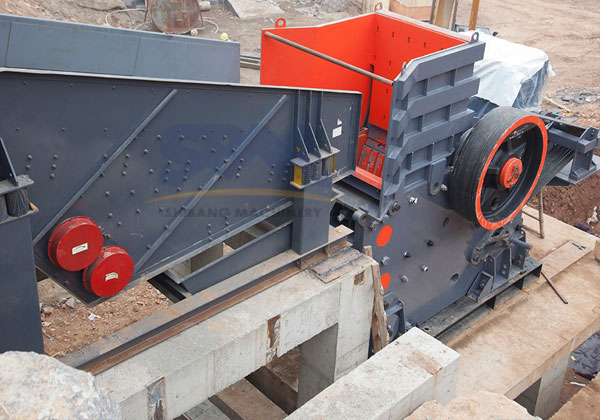Adjusting the discharge size of a jaw crusher is crucial for controlling the final product size and ensuring optimal performance of the crusher. The discharge size can be adjusted using different methods, depending on the design and configuration of the jaw crusher. Here’s an in-depth look at the main steps and techniques for adjusting the discharge of a jaw crusher.

1. Adjusting the Discharge Opening Using Wedges
The most common method of adjusting the discharge size is by using a wedge system. Jaw crushers often have two wedges installed on either side of the crushing chamber. These wedges can be adjusted manually or hydraulically. Here’s how you can adjust the discharge size with the wedge system:
- Step 1: Locate the adjustment mechanism, typically found at the back of the jaw crusher. The wedges are positioned between the stationary jaw and the movable jaw.
- Step 2: For manual adjustment, use a wrench or a hydraulic system to move the wedges in or out. By moving the wedges closer together, you reduce the opening, thus making the discharge size smaller. Conversely, moving the wedges farther apart increases the discharge opening, producing a larger product size.
- Step 3: After making the adjustment, check the crusher’s discharge size using a measuring tool like a ruler or gauge. Fine-tune the wedges to achieve the desired discharge size.
- Step 4: Tighten the wedges securely after making the adjustments to ensure stability during operation.
2. Adjusting the Discharge with a Hydraulic Shim Plate
Some modern jaw crushers come with a hydraulic shim plate system. This system allows operators to adjust the discharge opening without stopping the crusher, saving time and improving efficiency.
- Step 1: The hydraulic shim plate is typically positioned between the main frame and the movable jaw. Hydraulic cylinders are used to apply force and adjust the height of the plate.
- Step 2: To adjust the discharge size, activate the hydraulic control system. The system will raise or lower the shim plate, thus changing the gap between the jaws.
- Step 3: Monitor the crusher’s performance and adjust as needed until the desired discharge size is achieved.
3. Using a Toggle Plate for Discharge Adjustment
Some jaw crushers feature an adjustable toggle plate system. The toggle plate is a key component that maintains the distance between the stationary and movable jaws. It can be adjusted for finer control over the discharge size.
- Step 1: The toggle plate can be adjusted by tightening or loosening the nuts or bolts that hold it in place.
- Step 2: Tightening the bolts will reduce the gap between the jaws, resulting in a smaller discharge size. Loosening the bolts will increase the gap, producing a larger product.
4. Using the Crusher’s Settings and Discharge Settings Control System
Many modern jaw crushers come with electronic discharge setting control systems. These advanced systems allow operators to fine-tune the discharge size with precision.
- Step 1: Access the control panel on the crusher and select the desired discharge setting. These systems may use sensors to monitor the size of the material being produced and automatically adjust the settings.
- Step 2: The system will adjust the crusher’s settings based on pre-defined parameters to optimize the product size while maintaining crusher performance.
5. Considerations When Adjusting the Discharge Size
- Wear and Tear: Constantly changing the discharge size can cause excessive wear on the jaw plates. It’s important to regularly inspect these parts for wear and replace them when needed.
- Crusher Performance: Reducing the discharge size may affect the throughput capacity of the crusher. Ensure that the crusher is not overloaded by smaller settings.
- Material Characteristics: The type of material being crushed, such as hardness and moisture content, can affect the ease with which the discharge size can be adjusted.
Adjusting the discharge size of a jaw crusher is essential for controlling the size of the final product and optimizing crusher performance. Whether using manual wedges, hydraulic shim plates, toggle plates, or electronic control systems, the method you choose will depend on the crusher’s design and operational requirements. Regular adjustments and maintenance ensure that the jaw crusher continues to operate efficiently and produce the desired product size.
